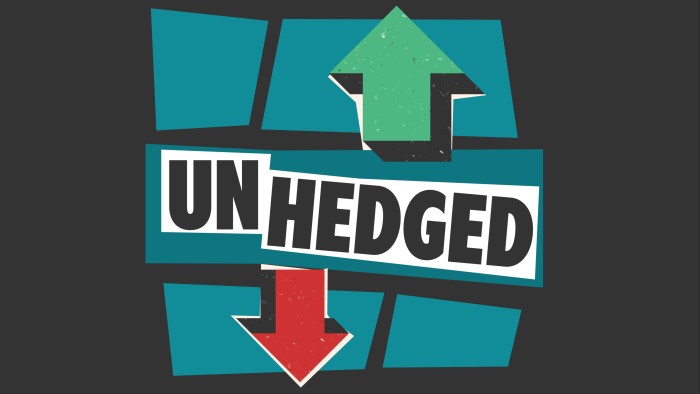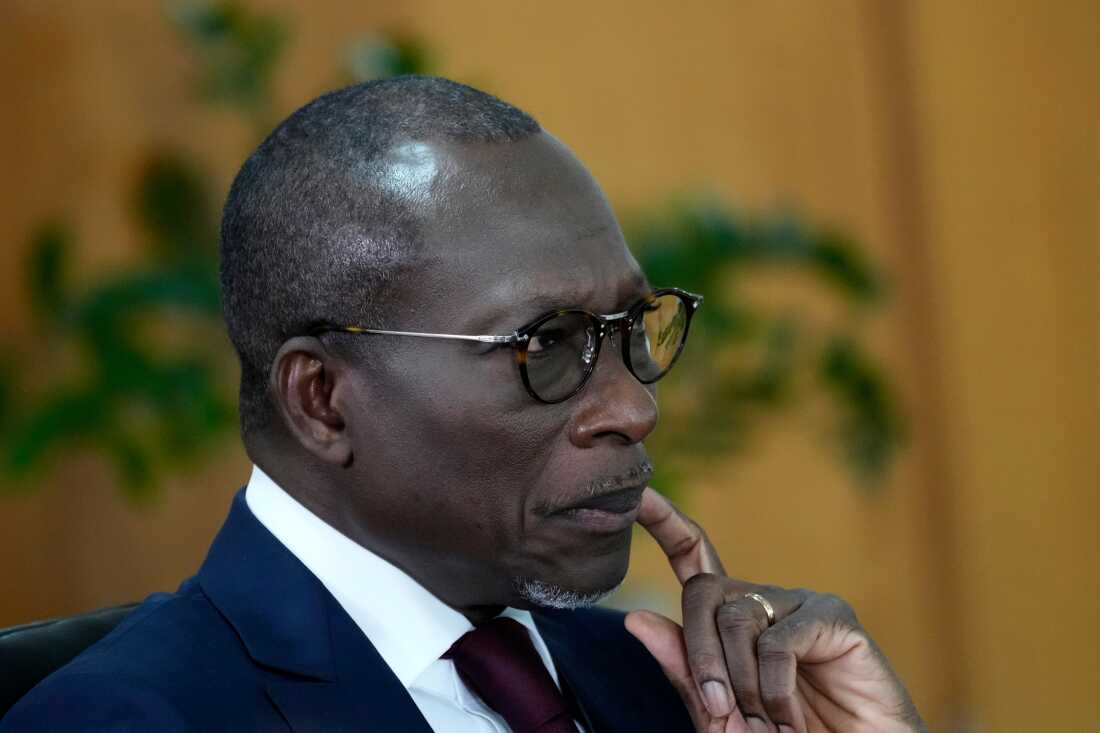Unlock the Editor’s Digest totally free
Roula Khalaf, Editor of the FT, selects her favorite tales on this weekly publication.
This text is an on-site model of our Unhedged publication. Premium subscribers can join right here to get the publication delivered each weekday. Commonplace subscribers can improve to Premium right here, or discover all FT newsletters
Good morning. Goal reported weak first-quarter outcomes yesterday and guided in the direction of a decline in gross sales this 12 months, sending shares down greater than 5 per cent. The corporate additionally stated it might increase some costs to offset tariffs, echoing Walmart’s feedback final week. Retail earnings haven’t been adverse throughout the board, however keep in mind: the tariff headwinds have hardly began to blow. Electronic mail us: [email protected]
Greenback frown
All US federal budgets are necessary. However this 12 months’s, at present working its manner via Congress, is especially so. Usually, a price range that features a optimistic “fiscal impulse” — extra borrowing, extra spending, a wider deficit — pushes money into the monetary system. That cash ultimately exhibits up as greater company income, which helps greater fairness costs, which might, in flip, entice international capital into the US and raise the greenback. US Treasury yields may rise, too, however much less from fears over deficit sustainability than greater inflation expectations.
This time, nevertheless, sustainability fears appear to be gaining actual traction. That signifies that widening the deficit might not be good for equities or the greenback, and Treasuries may undergo greater than normal.
It’s conventional to speak in regards to the US foreign money when it comes to the “dollar smile”. That is the notion that the greenback tends to strengthen each when the US economic system is doing higher than the remainder of the world (for apparent causes) and when the US economic system is doing unusually badly (as a result of if the US is wobbling, the remainder of the world might be worse, so the greenback advantages from a flight-to-safety commerce). Solely within the center, when the US economic system is okay and the remainder of the world is flourishing, does the greenback weaken. That framework might not apply, nevertheless. In a current observe, George Saravelos, Deutsche Financial institution’s head of FX analysis, known as this the “dollar fiscal frown”:
At one excessive on the left is a fiscal stance that’s too straightforward. This results in a mixed drop in US bonds and the greenback . . . The persistence of this sample could be a transparent sign the market is shedding its urge for food to fund America’s deficits and rising monetary stability dangers. On the different excessive, on the suitable of the frown is a fiscal stance that tightens too shortly, closing the deficit sharply however forcing the US right into a recession and a deep Fed easing cycle. On this extra standard world, the greenback drops and bond yields rally.
Whereas equities have recovered since “liberation day”, the greenback index remains to be down round 4 per cent — regardless of bond yields which are significantly greater, which might usually assist the greenback. This means that, on the margin, worldwide buyers could also be shifting away from US property — the left-hand facet of Deutsche’s frown. There are regarding indicators elsewhere, too: 30-year bond yields are rising quick, different currencies are appreciating, and, simply yesterday, a Treasury public sale suffered weak demand. Beneath present situations, it’s attainable that the market will recoil at a optimistic fiscal impulse it may need as soon as discovered acceptable, sending bonds, equities and the greenback down collectively. Yikes.
The notion {that a} weakening fiscal impulse would hurt the greenback — the right-hand facet of the frown — is sensible on this surroundings, too. As Marko Papic at BCA Analysis says, US buyers have develop into “addicted to fiscal [excesses]”. A fiscal impulse too small to maintain fairness costs and valuations at historic highs may push international buyers away from greenback property. Outflows may improve the chance of a slowdown or recession, forcing the Fed to chop charges — one other drag on the greenback. This appears all of the extra doubtless now that spending is choosing up in Europe, significantly in Germany. A stronger fiscal impulse overseas provides buyers fewer causes to pile into Treasuries.
So we discover Deutsche’s framework wise, however solely to a level. Sure, the bond market is sending Congress some appropriately adverse suggestions (and we pray the message will get via). However we suspect that the underlying international urge for food for Treasuries and US equities stays wholesome. As Ben Shoesmith, senior economist at KPMG, has famous to Unhedged, although yields have risen, they’re sitting on the similar ranges as earlier than the good monetary disaster. In different phrases, what we’re seeing now is perhaps normalisation somewhat than revolution (chart courtesy of Shoesmith):
It could even be a mistake to imagine {that a} slowdown is inevitable this 12 months. We nonetheless don’t know the place Donald Trump’s tariffs will wind up and what their impacts on development might be. If something, the economic system is trying a bit too scorching proper now.
It’s tough to learn the fiscal tea leaves, too. At first look, the fiscal impulse appears to be optimistic, however much less optimistic than earlier budgets. But, the timing is difficult; a price range performs out inconsistently over a decade. In accordance with Freya Beamish, chief economist at TS Lombard, the proposed tax cuts are anticipated to hit sooner, whereas the spending cuts will hit in a while. Within the close to time period, that means way more liquidity in markets and the economic system.
this panorama, it seems like there are few good situations for Congress or the market. The price range needs to be stimulative sufficient to maintain development — however not so stimulative that it sends Treasury yields hovering. Had been Treasury yields to rise by one other hundred foundation factors or extra, that will make servicing the debt meaningfully costlier and will pressure the federal government in the direction of an austerity price range. That might wreck development and produce down rates of interest, and with them the greenback.
In fact, this might get so dangerous that it spills over right into a full-blown international meltdown. If that occurs, international buyers will in all probability flock again to the US and the greenback. However that will be a really painful strategy to assist American exceptionalism.
One good learn
FT Unhedged podcast

Can’t get sufficient of Unhedged? Hearken to our new podcast, for a 15-minute dive into the newest markets information and monetary headlines, twice every week. Compensate for previous editions of the publication right here.
Really helpful newsletters for you
Due Diligence — High tales from the world of company finance. Join right here
The Lex E-newsletter — Lex, our funding column, breaks down the week’s key themes, with evaluation by award-winning writers. Join right here




